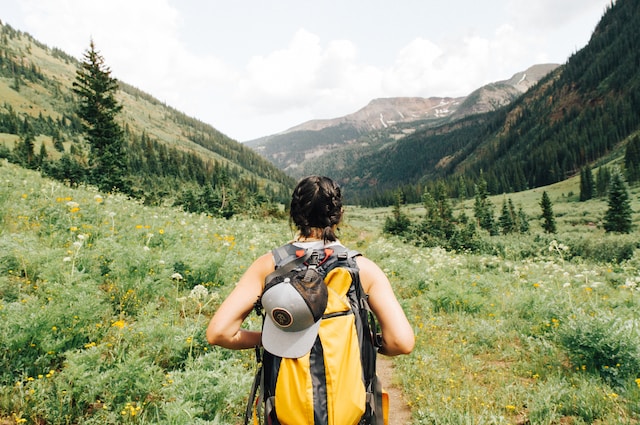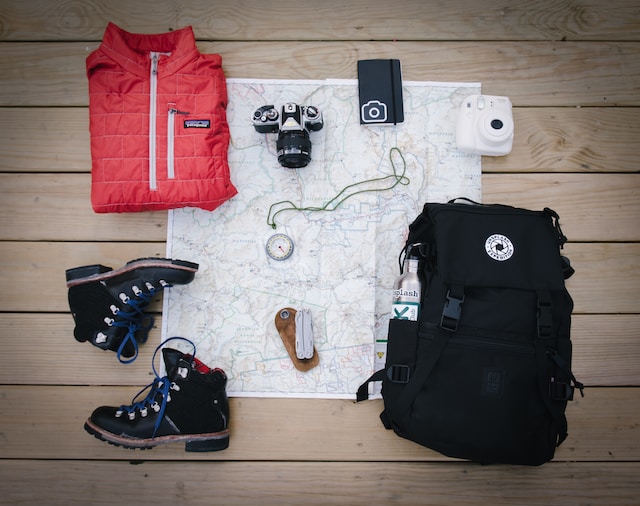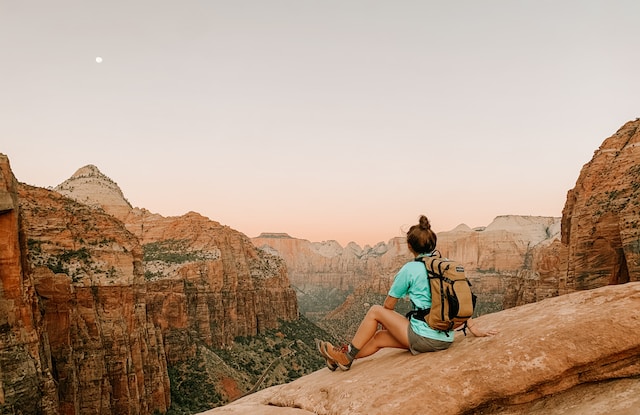
Are you seeking a workout that gets you moving in the great outdoors instead of a stuffy gym? Hiking is the ultimate fitness and recreational activity for many reasons. This form of exercise is suitable for all levels, including beginners, and can significantly improve your physical health.
Guess what? It’s also great for your mental health. Simply going outdoors has benefits, and when you combine it with movement, you get a one-two punch of mental health goodness.
You might have some questions if you’re new to the sport. We have you covered. Here’s your ultimate guide to hiking for beginners.
Why Hike?
What makes hiking such a fantastic fitness choice? Here are three great reasons.
1. It’s a Great Workout That Doesn’t Feel Like Exercise
Your body was made to move. However, many people avoid exercise. Although time is the number one reason people give for not getting enough activity, other factors play a role. For example, many people feel intimidated in a gym environment and their discomfort keeps them on the couch.
However, there’s often nobody but you and the local fauna on the trail — any encounters with others are brief and pleasant and need not involve skin-tight clothing. Better yet, you won’t feel like you’re exercising. Hiking is more like exploring, getting lost in your head and letting curiosity reign supreme as you challenge yourself to see what’s just beyond the next fork.
Like it or not, exercise is vital to health. It improves your heart and lung function and encourages healthy circulation to decrease your risk of everything from strokes to varicose veins. Working out delivers fresh blood and oxygen to every cell in your body, making digestion and elimination easier and keeping your skin silky smooth.
2. It’s Fabulous for Your Mental Health
A recent study found that exercise is 1.5 times more effective at easing mild depression symptoms than medication. When you combine movement with the mental health benefits of simply being outside, you get twice the mood-boosting power. While people with depression often struggle to push themselves to get moving, hiking is much more enticing than getting dressed to go to the gym.
Furthermore, hiking also relieves stress and prevents anxiety. Another study found that simply gazing at natural scenes reduced tension and increased focus. Immersing yourself in nature is even more powerful.
3. It’s the Perfect Antidote for the Modern World
The modern world can make you forget how to step out of production mode and simply be human. However, you’re not a tool on the assembly line. You are blessed with this unique but all-too-short gift of life, and the world is meant for you to enjoy. Hiking reconnects you with what it means to be alive, another creature as a part of the thriving wonder of all creation.
Getting Started With Hiking
You’re ready to get started with your hiking adventure. Before you lace up your boots, you should know a few tips to increase your enjoyment on the trail.
1. Warm Up and Cool Down
Even though hiking doesn’t feel like a workout, it is — and your body responds best to the same techniques you use in fitness classes. Take a few minutes to warm up. Even just a few dynamic stretches like bodyweight squats and tai chi twists can help limber up your muscles and get the synovial fluid flowing to your joints to prevent stiffness.
Your post-hike cooldown is where longer, static stretches belong. Make sure you give your lower body extra love, including your feet. Kick off those boots and let your toes spread out after the compression of the hike. You can also search YouTube, which has a world of free yoga, including videos specifically designed for after a hike or trail run.
2. Start Slow
A common mistake many beginner hikers make is to go too hard and far on their first few outings. Hey, it’s understandable — when your workout doesn’t feel like one, it’s easy to push it! However, you could end up disliking this fabulous pastime if you wake up feeling sore the next day.
Instead, plan your first few outings, keeping them to a mile or two at the most. Your muscles will gradually adjust to the exertion, building new capillaries to feed them with oxygen-rich blood to prevent fatigue as you advance.

3. Invest in the Right Gear
Hiking is one of the least expensive sports, but some gear will keep you safer while increasing your enjoyment. First and foremost is a well-fitting pair of boots. They should have enough wiggle room that they don’t squeeze your toes without too much slide. Ankle support is a must for those who tackle rocky slopes.
What else should you take on your hike? Here’s a short list:
- A hat
- Sunglasses
- Sunscreen
- Bug spray
- Tall socks: For protecting your legs from ticks if you wear shorts.
- A first aid kit: It doesn’t need to be extensive, but you should carry a few bandages, antiseptic ointment and allergy pills if pollen affects you.
- A walking stick or trekking poles: Walking poles can ease pain from herniated discs or other spinal problems on long hikes and help you keep your balance on rocky, uneven terrain.
Staying Safe on the Trail
One of the most liberating feelings in the world occurs when there’s nothing but you, dirt and blue sky as far as the eye can see. However, going into the wild means becoming responsible for your own safety. According to the National Park Service, roughly 120-150 people die on America’s trails each year. Some of these deaths occur due to medical conditions, but others are avoidable — if you take the right precautions.
1. Hydrate, Hydrate, Hydrate
It’s impossible to overstate the importance of hydration. If you have any extra cash to put toward your hiking gear, a camelback makes a wise investment. It keeps a water stash safely on your back and provides a handy pocket or two for your first aid kit and compass.
How much do you need? A good rule of thumb is two cups of water per hour — but it’s not a hard and fast standard. For example, you might need even more if you hike in the Arizona desert in July.
2. Learn Basic First Aid
It helps to know a few basic first-aid tricks before you head out on the trail. Learning CPR is also a plus — although you can’t perform it on yourself, you never know when you might save someone else’s life. However, ensure you can do the following:
- Remove stingers
- Dress minor wounds: Hence the first aid kit.
- Recognize signs of heat-related illness: And be prepared. Even if you know what to do, you must use your judgment. You won’t find much shade on some trails, so stick to hiking in the early morning and late evening hours during the hottest days and heed extreme weather advisories.
3. Understand What Critters You Might Encounter
Chances are you won’t encounter much wildlife on many urban trail systems. Still, exceptions exist. Furthermore, you’ll likely meet all kinds of critters if you head into a true wilderness or one of America’s National Parks. Read about the risks and what precautions to take for your specific location.

4. Bring a Friend
There’s safety in numbers. While solo hiking can be glorious, beginners should stick with a buddy. If one of you twists an ankle or otherwise encounters trouble, the other can go for help. Even experienced outdoor enthusiasts use this system, especially in unfamiliar environments.
Hiking is for people of all ages, so consider bringing your kids along for the fun! Studies show that children who spend time in nature when young become better stewards of the environment in adulthood.
Fun Ways to Expand Your Hiking Routine
Are you ready to take your hiking workout to the next level? Here are some fun ways to make your next outing even more memorable.
1. Make Your Next Vacation a Trek
Are you in charge of planning the family vacation? Why not head somewhere known for its spectacular hiking? Consider adding these destinations to your itinerary:
- Sedona, AZ
- Telluride, CO
- Lake Tahoe, CA: Although check for trail closures in 2023 due to record snowfall.
- Grand Teton National Park, WY
- Appalachian Trail: Various states along the eastern seaboard from Maine to Georgia.
2. Join a Hiking Group
Hiking with a friend is much easier when you have several who share your passion for your favorite pastime and fitness activity. Check your local Nextdoor and community classifieds listings for hiking groups near you — you might also call your parks and recreation department.
3. Learn About Native Flora and Fauna
Today’s technology makes it easier than ever to identify the plants and critters near you — although there will always be something romantic about authentic field guides. However, apps such as PictureThis let you instantly get the 411 on the cool things you spy on the trail with a click of your phone’s camera.
4. Try a Night Hike
Are you seeking a romantic date night idea? Invite that special someone on a night hike. Pick a trail you know well, and bring a flashlight and plenty of warm clothes. You’ll marvel at how different and magical things look under the moonlight, and the sound of coyotes howling in the distance is a perfect excuse to hold hands.
Beginner’s Hiking Guide
If you want a workout that doesn’t feel like one and won’t even make you set foot in a gym, then lace up your boots. Hiking is the perfect exercise for many reasons, and it’s fantastic for people of all ages, body types and fitness levels, including beginners.





Leave a reply